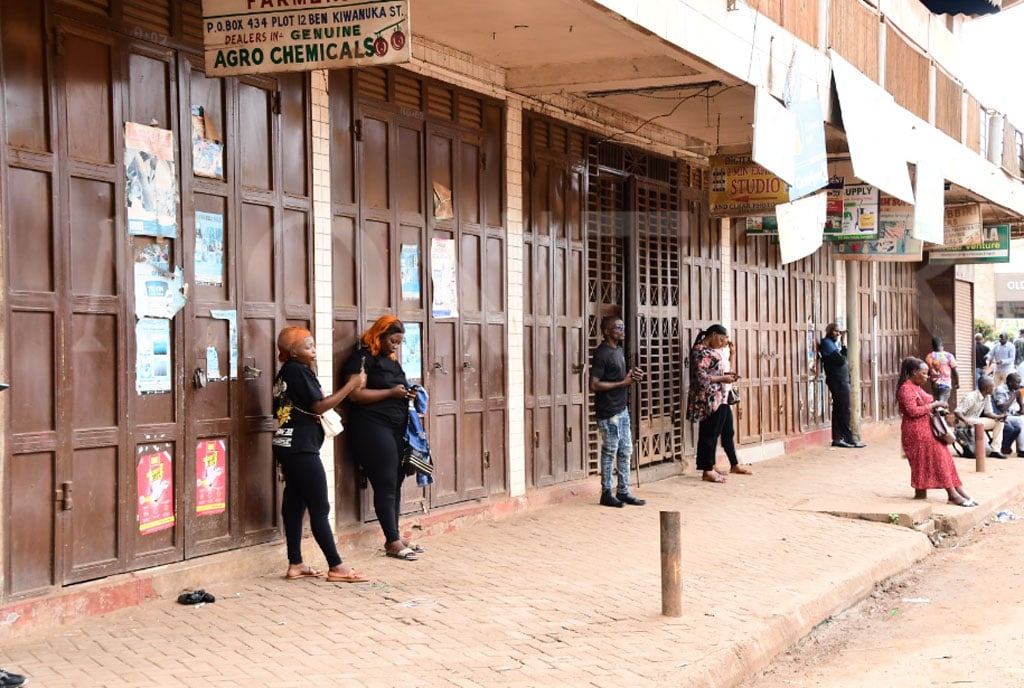The arrival of Jopadhola, Iteso in present day Tororo District
What you need to know:
- Move to Tororo. The Iteso immigration was leaderless and not organised unlike their Jopadhola counterparts. The first appearance of the Iteso families in Budama did not bother the Jopadhola who instead decided to adopt them into some Padhola clans.
The recent increase in demand by the Iteso from Tororo County to break away from Tororo District has left the Iteso and Jopadhola of West Budama struggling over who between them owns Tororo Municipality.
History, however, suggests that one of the tribes migrated to the area before the other and the latecomers were welcomed as squatters.
Genesis
West Budama was one of the six counties that formed Bukedi District. At the time of arrival of the first Jopadhola immigrants, the area was heavily forested and uninhabited.
The new immigrants being cattle keepers preferred the low lands other than the raised areas. They moved to the areas bordering River Mpologoma. What became known as Padhola territory was initially divided into three ecological zones.
The first was the western area which was the most fertile with thick forests. It was in present day Katandi and Senda in Kirewa Sub-county which was known as Lul, meaning forest.
In his 1958 paper Anuak Village Headmen published in the 29th edition of International African Institute Memorandum, Godfrey Lienhardt says: “The second ecological zone, which lies in the south is called by the Padhola Mawele.” This area had less water and parts of it had tsetse flies, making it not ideal for cattle keepers.
The third zone was the eastern part known as Yo Woko, meaning in the direction of outside. It was the area last settled by the Jopadhola. The areas known as Yo Woko and East Budama, now Tororo County, formed a no man’s land between the Jopadhola settlements.
According to History of Southern Luo Volume I, Bethwell A. Ogot writes: “Following the Sewe (Masai) withdrew back into modern Kenya about 10 to 11 generations ago, this area which is the highest and coolest part of the Padhola remained unoccupied until about four to five generations ago when the advance wave of the Iteso moved into it.”
Basing on the 1959 census, about 101,451 people who inhabited West Budama at the time were not indigenous folks of the area. Many of them arrived much earlier.
But there was another set of immigrants who moved to the area in the later part of the 19 Century. According to The Lwo Part II, J. P. Crazzolara describes the new settlers as being descendants of the same person.
“The present 31 Padhola clans descended from the sons of a certain person called Adhola,” he writes. The different clan leaders referred to themselves as brothers, regarding their ancestors as sons of a man called Adhola.
Ogot goes on to say: “Any clan which could not trace its genealogy back to Adhola was disparaged.”
The immigrants into Budama came not as a tribe but as clans. It was through occupation and amalgamation that some clans through relation evolved into tribes.
According to the Luo Padhola Historical Texts volume II, “The first wave of Padhola immigrants travelled with the last wave of the Kenyan Luo from Fort Atura via Kaberamaido where they stayed for a short while.”
During the immigration, the Jopadhola were under the collective leadership of a one Adhola, a title Crazzolara suggests was a collective name for a Luo group.
Another account, according to Ogot, was that it “identifies Adhola with Labong’o the son of Olum from whom several Acholi clans claim descent. Adhola, according to this version, was a nickname given because he had a sore leg”.
During their immigration, according to the Jopadhola history, they found Kaberamaido not inhabited and hence gave the place the name Kaberamaido (a place suitable for groundnuts). Ogot says the name was later corrupted by those who followed the Padhola.
Between 1639 and 1700, according to traditional records documented by Captain E. M. Persse, “Some of the Padhola clans migrated from Nagongera in modern West Budama to Budola under the leadership of Mufuta, Kasede and Owiny. In Budola they separated. Kasede went to Budama.”
Kasede is the founder of the sub-clan known as the Amor-Kasede, one of the Padhola clans.
Oral history has it that two major reasons may have caused this separation: One version was that Adhola and Owiny quarrelled over the leadership which led to the split, that’s according to the Luo Historical Texts volume I.
While another version by Crazzolara in The Lwoo Part III and in the Padhola Historical Text Volume I say that “Adhola’s wife Nyanjurya was heavy with a child and was, therefore, unable to continue with the march. Owiny then asked his brother to wait till the child is born then follow. In this way they separated never to reunite.”
The 31 clans of Adhola are said to descend from the two wives of Adhola Nyajurya and Oryang.
Coming of the Iteso
The first group of Iteso to arrive in what had been established as the Padhola land came from Karamoja, first settling at Magoro and Usuk in Katakwi where they found fertile ground suitable for their agricultural type of life.
The first round of Iteso migration stretched from 1700 to 1800. The Iteso immigration was leaderless and not organised unlike their Jopadhola counterparts. The first appearance of the Iteso families in Budama did not bother the Jopadhola who instead decided to adopt them into some Padhola clans.
As the immigration flow increased, the newcomers were not contented with being adopted by their hosts. They stared occupying the vast vacant areas they found which they called Kwapa, meaning wilderness.
However, as the number of the Iteso in the area increased, the Jopadhola lost the generosity to the newcomers who had started erecting permanent settlement on the land the Jopadhola acquired through blood and sweat.
According to Volume II of the Padhola Text, the Iteso were forcefully driven out of Tororo by the Jopadhola. After a number of generations, the Iteso started moving back to Tororo, not as a group but as a single family unit or as individuals.
However, with the establishment of the British administration in the area, many of the Iteso came back and occupied the land in East Budama.
Ogot explains: “Even at this time they did not move back as a group. They came in small parties asking for land on which to settle from various individual Padhola families and clans to which they attached themselves.”
The new returnees were allowed to intermarry leading to a large number of them being absorbed into the Padhola tribe.
The slow immigration of the Iteso and the intermarriages boosted the Iteso population to a point when they outnumbered the Padhola in East Budama. This led to the growth of self-consciousness among the Iteso and as a result they demanded that the British administration take them as the rightful owners of East Budama and the Padhola inhabitants in the area as aliens.
To support their case, they referred to the names of local area features like rives and hills which they found nameless and gave them Iteso names such as Osya, Morukatipa, Kwapa, Angurum, Otukutuku Ogwait and others.
This led to tension between the Iteso and the Jopadhola in East Budama. Prof A. W. Southall described it in a paper where he said, “The independent Teso returned to occupy the land right up to the frontier of the Padhola settlement, but they were regarded by the district administration as being in the Padhola territory. This is evidenced by the fact that this county is called East Budama to this day and by the fact that no Teso county chief was appointed to rule over it until about 1940.”
He went on to say: “In recent years, tribal feeling has become very strong among the Iteso. There can be little doubt that this has its origin among the independent Iteso who returned from the east to settle in desirable empty land but found themselves for the first time under Padhola chiefs, recognised as their overlords by the British administration.”
“They have won recognition as a separate tribe in East Budama, with a right to their own county chief. But their feelings have spread to many of their fellow tribesmen in the process of incorporation into Padhola society.”
Southall attributes the change in attitude of the Iteso on politics and economic factors. He backs the influence of the two factors saying: “Though Teso adoptees were highly valued fighters by the Padhola.”
Having managed to conquer nature and make the area habitable despite the lack of a central leadership, the Padhola were threatened by the intrusion of the Iteso almost 200 years after they had to settle in the area.
Next week read about the making of Ankole




